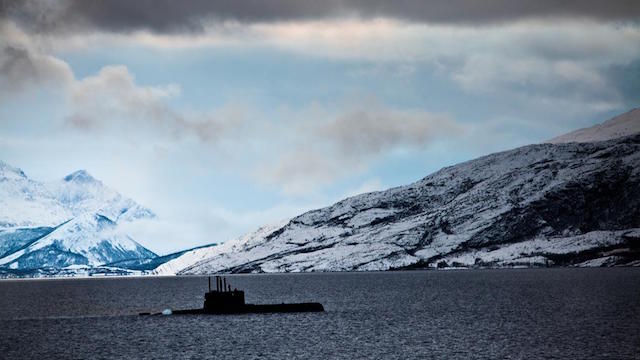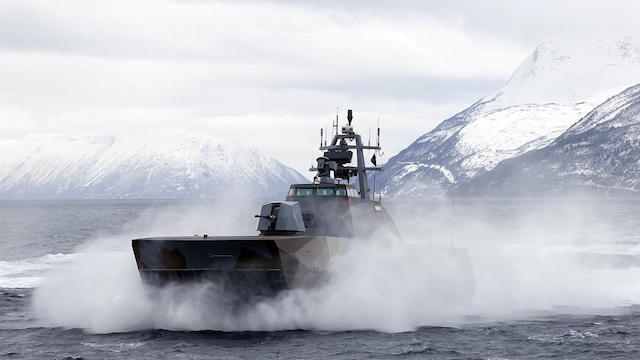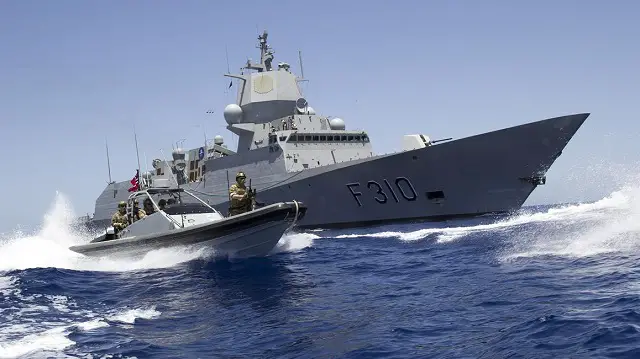 An Ula-class submarine. Source: Norwegian Navy |
|||
Procurement
plans Norway’s procurement plans will focus on providing to the Armed Forces equipment that will allow them to carry out operations in the whole spectrum of conflict. In addition some of the procurement plans will provide strategic capabilities, that will allow the NAF to identify and track targets from a distance, destroy them if necessary and at the same moment survive in an advanced countermeasures environment. To implement the necessary procurement plans the government recommended additional funding of NOK165 billion (EUR17.5 billion) over the next 20 years. The first phase of the procurement plan, up to 2020, will address the deficiencies in spare parts, maintenance and ammunition, which have accumulated over the past years. From 2021 until 2026 the funds will mainly focus on new investment programmes. Along with the commissioning of new systems and platforms, the Norwegian Armed Forces will implement a reorganization plan that will result in a force structure with higher readiness and availability. According to its data, the Royal Norwegian Navy has two naval bases, which serve as operational and logistical hubs. The main one is Haakonsvern Orlogsstasjon near Bergen and the secondary, with more limited capabilities, is in Rasmund, at the north of the country. The Coast Guard, which is part of the Navy, has its main base in Sortland, in Northern Norway. The LTDP 2017-2020 mentions that the service will be organized around the Tactical Sea Command and a logistics base. The force structure is planned to include the following platforms: • 5 Nansen-class frigates; • 6 Skjold-class coastal corvettes; • 4 new submarines that will replace the six Ula-class; • 3 logistics and support vessels; • 6 Mine Countermeasure vessels, which will be reduced to four and later replaced by Mine Countermeasure diving teams; • 4 Outer Coast Guard vessels with NH90 helicopters; • 4 Outer Coast Guard vessels without helicopters; • 5 Inner Coast Guard vessels; • 14 NHIndustries NH90 helicopters, operated by the Air Force, six of which will be integral to the Nansen-class frigates. The other eight will assume operations with the Coast Guard. Moreover, Norway plans to replace the LM P-3C Orion maritime patrol aircraft upon their withdrawal from service, with a new platform. The Orions are also operated by the Air Force. Nevertheless, their replacement is in line with the MoD’s plan for increased ISR and crisis management capabilities. The plans for the replacement of the P-3C are to be presented at the Parliament in due course. |
|||
 A Skjold-class coastal corvette. Source: Norwegian Navy |
|||
Personnel The restructuring plans will also bring changes to the Armed Forces training and composition. In the future, commissioned officers will comprise of 30% of the total force and the rest of the ranks will be the remaining 70%. Personnel will be reduced but without affecting the services’ combat capabilities, as the reductions will mainly come from administrative roles. Regarding the Navy, the MoD plans to increase the number of frigate crews from three to five. That will allow the continuous operation of four vessels at all times. A similar approach will be adopted for the Mine Countermeasure vessels. Although their number will be reduced to four, the number of crews will be retained to five, thus increasing the availability of the vessels. The service’s Coastal Ranger Command will be disband and some of its personnel will be reallocated to the rest of the Navy, while some others will cover the Army’s personnel needs. Moreover, the Norwegian Armed Forces will create one educational system for both higher military academic and military vocation education. One Armed Forces College will be created and the current six colleges and officers training institutions will merge into one organization structure. Finally, in an effort to reduce costs, the Armed Forces education will focus on joint initiatives and will give priority “to training and education that cannot be sourced elsewhere and will avoid duplication of functions between the different services and the civil education system.” |
|||
Analysis: The Norwegian Navy under the 2017-2020 Long Term Defence Plan
- Posted On




